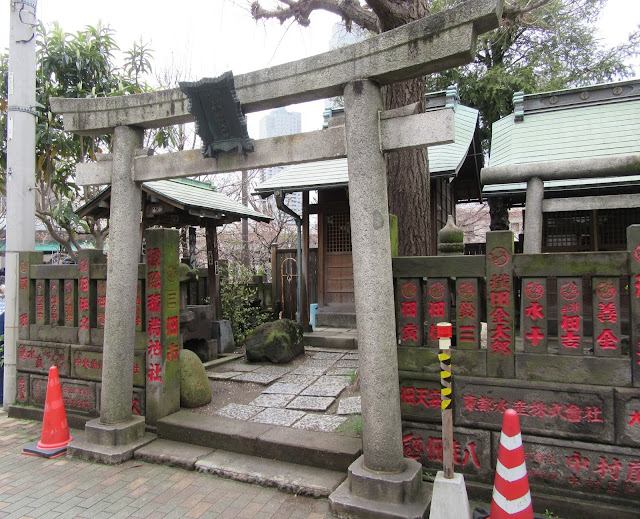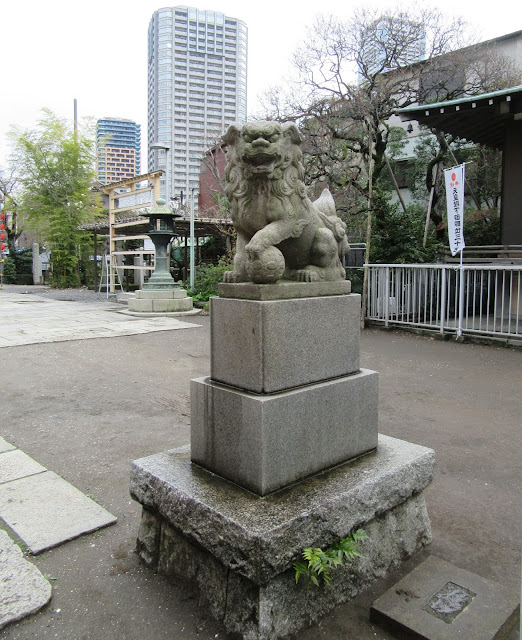When I was searching for information about the Midori statue, I found some old maps of Tsukuda Island. The first is an Edo era map of 1771 of Tsukudajima and Ishikawajima. This would have been before the ninsoku yoseba, criminal and poverty stricken rehabilitation facility, was established. Part of the islands belonged to the Ishikawa samurai family, which is why there are two names for the area. The other part was Tsukuda, which is where the shogun's fishermen lived and kept their boats.
As you can see from the maps, the land mass of the islands grew. This is an army survey map from 1892. Before and during the Meiji Restoration period the ship building industry increased here also. By this time the area was known only as Tsukudajima.
The last map is a detailed Meiji era map. The amount of reclaimed land is even more and the water way became narrower. Eventually the ship building moved elsewhere in 1979 and the area became mostly residential with shops and businesses. And became known to most as Tsukuda. Although it still retains many of the same roads and some of the older buildings.
While there are only a few boats around Tsukuda now, there are still reflections from when the island was known for fishermen and ships. One place is Tsukuda Namiyoke Shrine.
Tsukuda Namiyoke Inari Shrine was built as a place to pray for the safety of the fishermen. It is located near the Tsukuda Kobashi bridge, where the fishermen lived and kept their boats.
Even though it is small, it is well cared for. One feature of the shrine are the power lifting stones, like the one at the gate. These were used in contests of strength and are found at some shrines. The one here has "oshiri" written on it, which means smooth like one's bottom.
Another shrine in Tsukuda is Sumiyoshi Jinja. This was founded by the Osaka fishermen in 1646 for protection for their ships. The large torii features a ceramic name plate.
I don't know the age of the buildings here. Most shrines in Tokyo were rebuilt after the war. Many also are rebuilt at certain times since they are made of wood.
One of the guardian komainu at the shrine.
This is the Haiden, where prayers are offered to the enshrined gods. To the left is a brick building where the portable shrine, the mikoshi, was stored.
One of the smaller shrines. Sumiyoshi Jinja is one of the few places that has the names of the individual shrines on Google maps. This is the Funatama Shinto shrine. Interesting details on the shrine doors and carvings around the shrine.
This is the Eki Jinja Hoso shrine.
One of the amazing looking trees in the area. I do not know how old this tree is but the trunk is massive. Unless it was large when originally planted here, it probably has been here for a long time.
This post is similar to the one at the shrine in Hamamatsucho.
There is also an Inari shrine here.
Irifune Inari Shrine
The portable shrine, the mikoshi, is now stored in a newer building. Unfortunately since there were no lights on inside, this is the best photograph I could get.
A look at the grounds out towards the entrance torii.
And a bit of sky clearing near the end of my visit to Tsukuda. But not the end of my day walking around places in Tokyo. More from this day in my next post.




















No comments:
Post a Comment